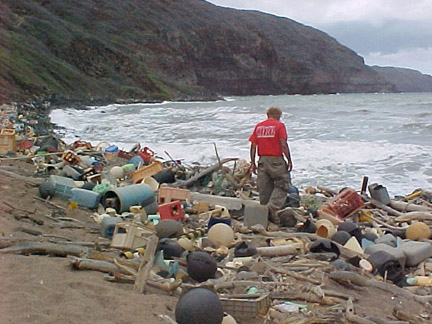Garbage disposal is not rocket science, but it’s no easy endeavor either.
As is typical in cities, armies of sanitation workers are charged with the task of picking up refuse (and recyclables where applicable) in an armada of waste-collection vehicles that are there to haul away the solid waste- and recycle-material, which is itself typically contained in city-supplied bins that are then wheeled out to curbsides to await pick-up and emptying. Add waste pick-up scheduling creation and management to the process and if you think this is an easy undertaking, think again.
What’s more, as the number of bins increases for each type of refuse collected – solid, green and recyclable waste, so too will be the types of collection trucks correspondingly required to handle the discards. Add to all this a once-per-year curbside pick-up (again, where applicable) for those throwaways not accepted for one reason or another during regular weekly pick-up cycles and one can gain an appreciation and really fast for what’s involved in refuse removal.
This covers residential. But what about wastes from farming activities: how is this handled?
Down on the farm
In California, Senate Bill 705, passed in 2003, stipulated that open-field agricultural burning was to be banned, and implementation of the bill was to be carried out in stages.
The information presented immediately below comes from the article: “Agricultural burn phase-out begins,” in the July 2005 issue of “Valley Air News,” a San Joaquin Valley Air Pollution Control District (SJVAPCD) publication and helps to provide greater clarity.
“SB 705 was enacted in 2003 and bans open burning in three phases:
- June 1, 2005: Field crops, most pruning and weed abatement;
- June 1, 2007: Orchard Removals;
- June 1, 2010: Pruning from crops harvested off the ground, vineyard removal and removal of diseased materials.
“Agricultural burning is currently a significant source of air pollution in the San Joaquin Valley, responsible for more than ten tons per day of particulates and more than 15 tons per day of smog forming chemicals,” noted the SJVAPCD.
The SJVAPCD then went on in the article in question to provide recommendations for alternatives to open-field agricultural burning such as chipping, the chopped-up material, for example, transported to co-generation facilities for further processing such as in electricity generation, or the ground-up material could be used for soil-amending purposes.
In fact, in “Up In Smoke” in the May 2003 issue of Nut Grower magazine, I explained: “Chipping and shredding of removed trees and brush, co-generation – or ‘biomass’ – operations, conversion of nut shells into cattle feed and livestock bedding, and creating ‘Granular Activated Carbons’ from the shells of nuts provide viable alternatives to ag waste burning.”1
I then went on in “Up In Smoke” to explain each of those processes in far greater detail.
“When the number of days in the ‘unhealthful’ zone in the San Joaquin Valley are coupled with the reportedly rising number of childhood asthma cases, other more effective and more efficient ways of both dealing with and disposing of ag-produced waste are being explored and developed,” I added.
The ‘beauty’ of waste handled right
Handling refuse sustainably is a difficult and, yes, dirty job, but by doing such, in the long run, it could be well worth the extra effort. But more than that there is another benefit: Air is spared in the process from waste not being burned.
It does make a difference!
Notes
- Alan Kandel, “Up In Smoke,” Nut Grower, May 2003, Western Agricultural Publishing Company, pp. 6, 7 and 10.

Image above: U.S. National Oceanic and Atmospheric Administration
– Alan Kandel
People always look for the easiest way to get rid of wastes. And that will be dumping it in garbage bins and burning them. Rarely does anyone think of other effective garbage waste management techniques that doesn’t cause pollution and harm other living beings. The picture above tells the tragic story of how humans only care for their good and well being. If they had cared about the environment they lived in, such a situation wouldn’t have occurred.
Proper management of waste is important to avoid problems which arise due to improper disposal of waste such as health problems pollution of the environment and diseases. Recycling is the best way of making your wastage reusable . Thanks for sharing this useful post.
Very nice blog!!! West coast recycle also recycle the waste material and thus make contriution toward environment protection for more info pls visit our website.
I’m always disappointed whenever I see waste that was intentionally dumped in ditches, on the side of the road, etc. It just shows that people truly do not care about what they’re doing to the environment.
Really hurt to see junk on road and other places. Peoples should get aware for this!!!!!!!!!
I admire your efforts toward environment protection
NIce Blog! I agree completely with you here. It is a very valuable and helpful collection of blogs. I am trying to gain information from all these. Really helpful post. Thank you..!!
waste disposal Essex
This is a great work to remove rubbish at fair rates. I appreciate your services.